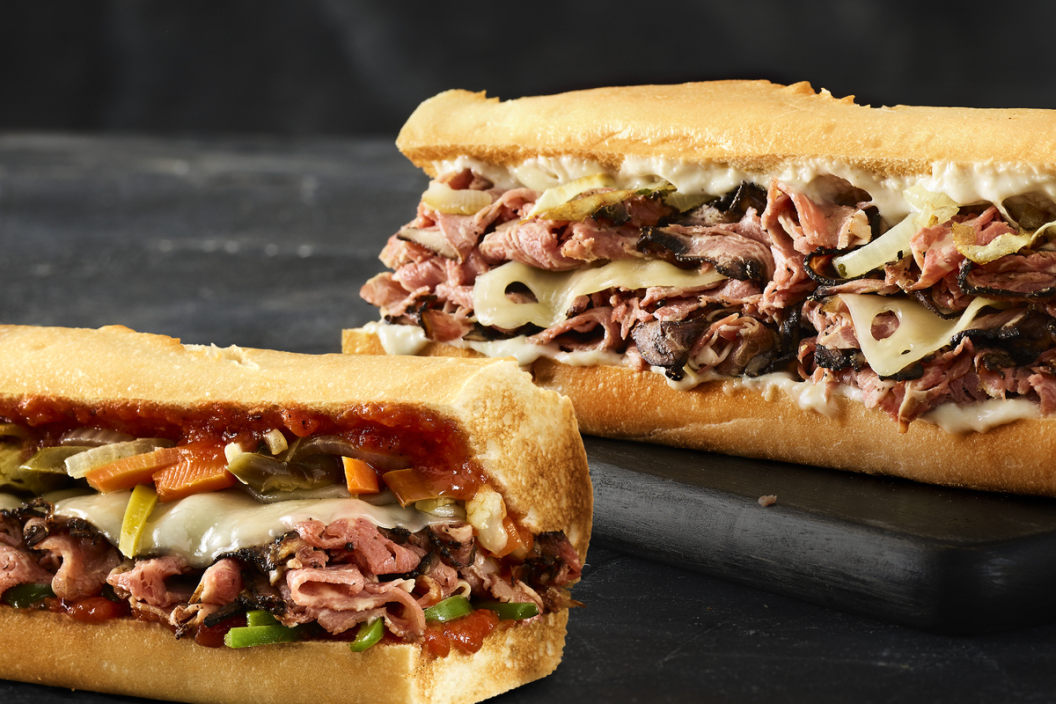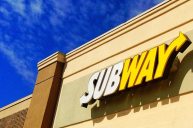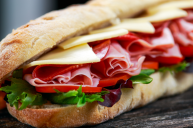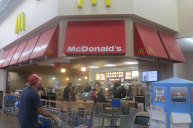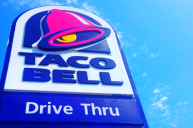Ahh, Quiznos. The toasty aroma, the novelty subs, the pepper bar... I can still remember the crackling warmth that radiated as rosemary parmesan rolls sailed through the hot oven. But where did it all go wrong? For a time, Quiznos was the second-largest submarine sandwich chain in North America. With toasted artisan bread, the Colorado-based franchise stood out against Subway, their prevailing cold cuts competitor.
In 2007, Quiznos boasted a massive 4,700 locations around the United States. Now, there are reportedly less than 300. Let's take a look at what happened to a fast-food spot that once seemed so special to casual diners. The story involves a recession, the $5 foot-long, and shockingly, suicide.
The Rise of Quiznos
Quiznos was founded in Denver, Colorado in 1981 by chef Jimmy Lambatos. Lambatos previously ran a steakhouse kitchen and was interested in creating a high-quality sub sandwich, inspired by the authentic Italian delis of his youth. Using baguette bread and an industrial toaster oven, the Quiznos sub was born. After modest expansion, 23-year-old Rick Schaden and his lawyer father Richard Schaden purchased the restaurant chain in 1991. With Rick as the new owner, president, and CEO, Quiznos grew to 103 different storefronts by the end of 1995. In 2007, the restaurant group peaked with over 5,000 Quiznos locations worldwide.
Quiznos now triggers memories of a simpler time: when a toasted sub was a novelty and downright weird commercials were enough to gain a foodie following. Quiznos utilized emerging internet phenomenons (such as spongemonkeys) to peddle their sandwiches is some truly bizarre TV advertisements — most often followed by the soothing, deep-voiced tagline: "Mmmmm... toasty." Marketed as the gourmet alternative to Subway, Quiznos touted a somewhat pricier menu. The reasoning might seem obvious: higher quality ingredients will cost more money. But Quiznos' unconventional process of marking up their own ingredients on the wholesale level would come to drive the QSR chain's decline.
A Quiznos Suicide
At the height Quiznos' popularity in 2007, its individual restaurants were hardly turning a profit. This might seem hard to believe considering the widespread popularity of Quiznos, but suspicious decisions at the top of the franchisor created a structure that prevented many store owners from seeing a dime. Under CEO Greg Brenneman, Quiznos began relying on the food sold to its franchisees to make profits, rather than the other way around. Quiznos owned the subsidiary company, American Food Distributors, which served a middle man, distributing materials to the various Quiznos branches. The stats are absurd. According to Restaurant Business Online, this subsidiary took in $500 million worth of revenue in 2006 while a typical Quiznos location earned just $400,000 —and that's without subtracting the astronomical food costs: a burden which fell on duped franchisees.
On November 27, 2007, Bhupinder Baber shot himself three times inside the bathroom of a suburban Los Angeles Quiznos. Baber had been a proud Quiznos owner and ran two locations of his own before Quiznos' shady licensing agreement became too much to bear: a $25,000 licensing fee in addition to warped contracts with American Food Distributors which loaded costs onto Baber and his fellow franchisees. Before taking his own life inside the sub shop, Baber wrote: "Someone must do something about what Quiznos is doing to the trapped franchisees... I deeply regret getting into Quiznos. I wish I had never heard of them." Baber was not the only franchisee with serious complaints. As 2007 came to a close, it became clear that Quiznos' abnormal business model was unsustainable.
Prior to this bad press, Rick Schaden had organized a risky Quiznos buyout that completely tanked. CCMP Capital Advisors purchased a minority stake in Quiznos from Consumer Capital Partners. But rather than buy Schaden time, the leveraged buyout left Quiznos with insurmountable debt. A leveraged buyout assumes — and puts a considerable stake in — a company's continued growth. As such, the company fronts the money to pay off its previous owner. But with Quiznos operating on razor-thin margins, the move eventually resulted in $875 million worth of loan obligations. Quiznos filed for bankruptcy in 2014.
The Financial Crash
A devastating market crash and recession in the United States promptly followed the tragic end of Quiznos' 2007 fiscal year. In 2008, 9 million Americans lost work, and years of savings, due to the ongoing financial crisis. Suddenly a trip to Quiznos seemed like the kind of luxury families could do without. Combine that with Subway's legendary campaign for the new, affordable $5 foot long, and it was looking grim for this once-powerful Colorado chain. And $5-foot longs were not the only hit Quiznos took due to Subway. Inspired by the signature Quiznos sandwiches, Subway added toasters to their many thousands of locations in 2005 and still offers this hot option. No longer able to boast an exclusive and elusive crispiness, Quiznos was, ironically, toast. The brand began desperately offering free sandwiches in an effort to compete — yet another bargain that burdened struggling franchisees. When many customers were denied the free sub, this marketing campaign earned the company even more brutal media coverage. Perhaps it seemed like no surprise when, suddenly, over 90% of Quiznos disappeared. Perhaps you didn't even notice.
However, there are still Quiznos. While an urban rarity, you can find the original toasty sub in most U.S. states. After restructuring and filing for bankruptcy, roughly 182 locations remain in America. It's safe to say that the decline of Quiznos represents the absolute pinnacle of franchise mismanagement on the corporate level. But Quiznos' impact on the current variety of sandwich shops is noticeable, even today. Subway and comparable restaurants now regularly advertise toasting subs, in addition to offering fresh menu items like flatbreads. The sub industry has stepped up its game over the last decade. And if you're really still dying to use up your Toasty Points, check out this link: there just may be a Quiznos near you.
Products featured on Wide Open Eats are independently selected by our editors. However, when you buy something through our links, we may earn a commission.
